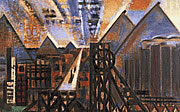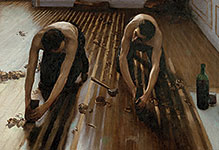
Daily Life
Work, Leisure, Clothing and Textiles, Politics and Portraits, Furniture, Houshold, Funerals, Death, Murder, Family.

#030102 3
Leather loincloth, Egyptian, New Kingdom, c1550-c1079 BC. Leather loincloth cut...

#030102 5
Figure of a man with a hoe, from Assiut, Egypt, 6th Dynasty, c2250 BC. By the Ne...

#03010214
Coffin of a woman, Egyptian, Early Roman period, 1st BCE- 1st CE. Anthropoid cof...

#03010223
Rag doll, Roman, made in Egypt, 1st-5th century. This doll is fairly well-propor...

#03010235
Reverse side of the throne of Pharaoh Tutankhamun (1346-1337 BCE) with four gold...

#03010242
Servant wearing panther skin offering lotus to God Osiris (depicted with flail a...

#03010243
Book of the Dead: The papyrus of Hunefer. Above Hunefer kneeling before a table...

#03010246
Book of the Dead: Papyrus of Heruben. (Book of the Dead - collection of funerar...

#03010249
Coptic textile (linen and wool) showing a nilometer. Nereids and putti are depi...

#03010254
Portrait of a young woman from the Fayum Cemetery. Around 161-180, period o...

#03010268
The obelisk at Alexandria, called "Cleopatra's Needle", Egypt, around 1801. Fro...

#03010269
"First and second pyramid of Gizah, Ancient Memphis", Egypt, around 1801. A view...






